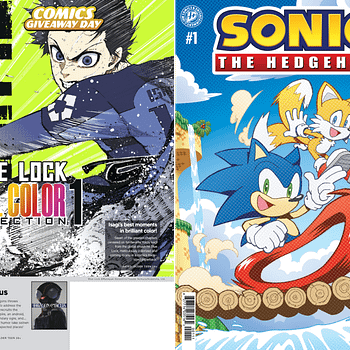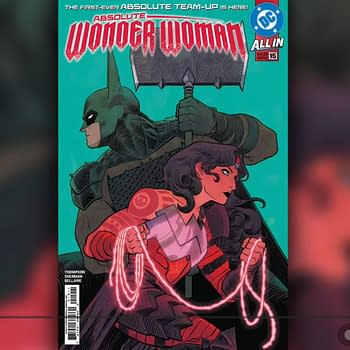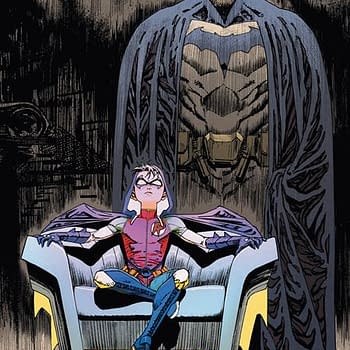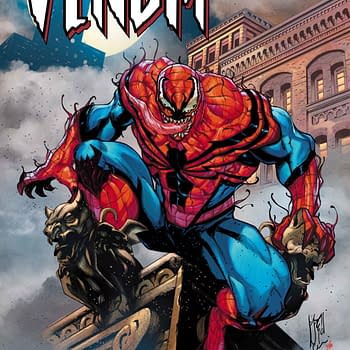Posted in: Recent Updates | Tagged:
Pond Life #5 by Martin Conaghan – Skip To The End

I promised last week that I would get on to the practicalities of comic-book writing, so that's exactly what I'm going to do this week.
I should point out here that I'm no comic-book script expert or a veteran, by any means (I use the word 'veteran' in the sense of someone who has a long service or experience in a chosen field as opposed to someone who has served in the armed forces), but I understand comics, and I've written enough short story scripts to be able to convey the basics, certainly as I perceive them.
Comic scripts are really no different from any other form of storytelling when it comes to the fundamentals; all good stories should have a beginning, a middle and an end. In the case of comics, the end is usually the part of the story where most writers should start; the basic theory being, if you know where you're going to end up, you can at least contrive a route to get yourself there.
In the UK, one of the most popular publications writers aim for when they're starting to hawk their wares is 2000AD, where an apprenticeship begins by writing up ideas for self-contained five or six-page stories that feature a twist ending, usually Future Shocks, Terror Tales or Time Twisters – very much in the vein of The Outer Limits, The Twilight Zone, Alfred Hitchcock Presents or Tales of the Unexpected. It sounds straightforward enough to create a fairly satisfying story in a short space that ends with an unexpected or quirky finale, but the problem most writers encounter in their search for a perfect short story is that most of them have already been written in some shape or form. So, you have to make sure yours isn't a rip-off of an old Ray Bradbury story or a Rod Serling script – and, unless you're Stephen Hawking, you're probably not going to improve on the many time-travelling conundrums that Alan Moore produced during his very prolific formative years breaking into the British comics industry. But the formula is simple enough; start at the end and work your way back. This is true of almost any story, of any length. The crime writer James Ellroy said in an interview recently that any writer who tells you they didn't know what their characters were going to say before they spoke is a liar; good writing comes from preparation and imagination. If you know where you're going, you'll get there soon enough.
But what about writing the script itself? Well, there's dozens of books out there that can give you pointers on how to layout a script, which fonts to use, how to indicate character speech, stage directions and innumerable other snobbish, anally-retentive formatting rules and unwritten regulations that generally only apply to the movie industry. However, when it comes to comics, you really need to stick to a few basic rules: number the panels on each page of your script, tell the artist what is happening in each pane, and indicate which characters are speaking and when (and if the words should take the shape of a balloon, a caption or a sound effect).
A comics script is essentially a map for an artist to draw from, often with suggestions or guidelines for panel sizes and rough stage directions. Most decent US-format comics contain an average of five or six panels per page – but it's sometimes more, and it's sometimes fewer, depending on the demands of the story (British comics sometimes contain seven or eight panels, due to the larger A4-size format). However, if you stick with five, as a rough guide, you really can't go wrong; but if you find yourself up at seven or eight panels on a page, you maybe need to re-think your script.
Each page of your script should feel almost self-contained in its own right to give the reader time to digest each component of the story and then jump to the top of the opposing page – or turn over to the next page, where appropriate, bearing in mind that dialogue and action often flows directly from one page to the next. In the case of a physical 'page turn', the script should probably build to a minor climax to give the reader a sense of satisfaction when they turn over the page to find out what happens next (Neil Gaiman creates a little crude 'mini-comic' of his scripts before he sends off a final draft to approximate the feeling his readers will obtain from flicking through the pages and digesting each panel/page).
In terms of dialogue, no-one can tell you what to make your characters say (or how they say it), but an old rule of thumb regarding word count is to think in terms of the number of panels on your page first – if you have six panels on the page, you should try not to exceed 35 words per panel (around 200-210 words per page). In any given balloon or caption, you should try to restrict it to 25 words. Of course, this is a rule that all the best writers break on a regular basis, but they've generally earned the right to. The important thing to try and grasp with dialogue is pace, both in the cadence of the words your characters are saying, the sequence in which the characters speak to each other, their meaning – and the relationship of the dialogue to the artwork on the page.
The last thing to consider in your script is the overall pace from start to finish; I said at the top that all good stories should contain a beginning, a middle and an end – as corny and unhelpful as that sounds, it works when you finally figure out what it means.
Martin Conaghan is a journalist and broadcaster at the BBC and a freelance comic book writer. The views expressed here are his own. He is also the editor of Insomnia Publications' Vigil line of historical graphic novels and the writer of Burke & Hare.
Are you a small press publisher, writer or artist? Do you have something you think might be worthy of mention on Pond Life? If so, tell Martin about it at pondlife@copydesk.co.uk
You can request to follow Martin at Facebook or Twitter.











